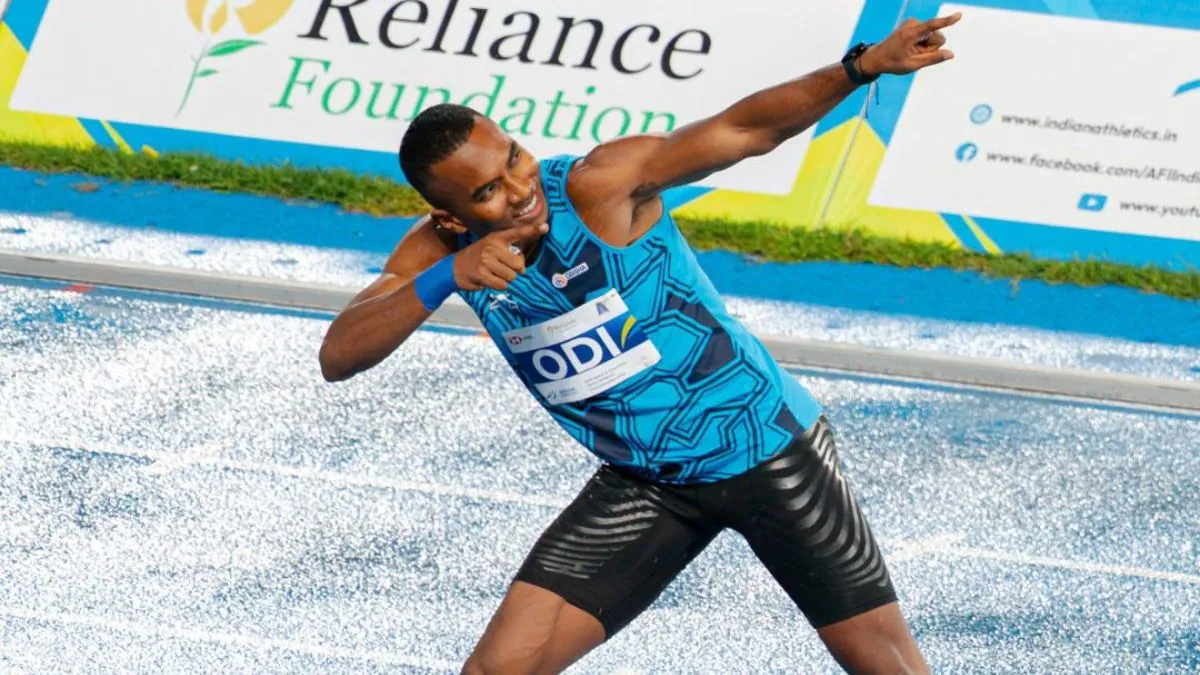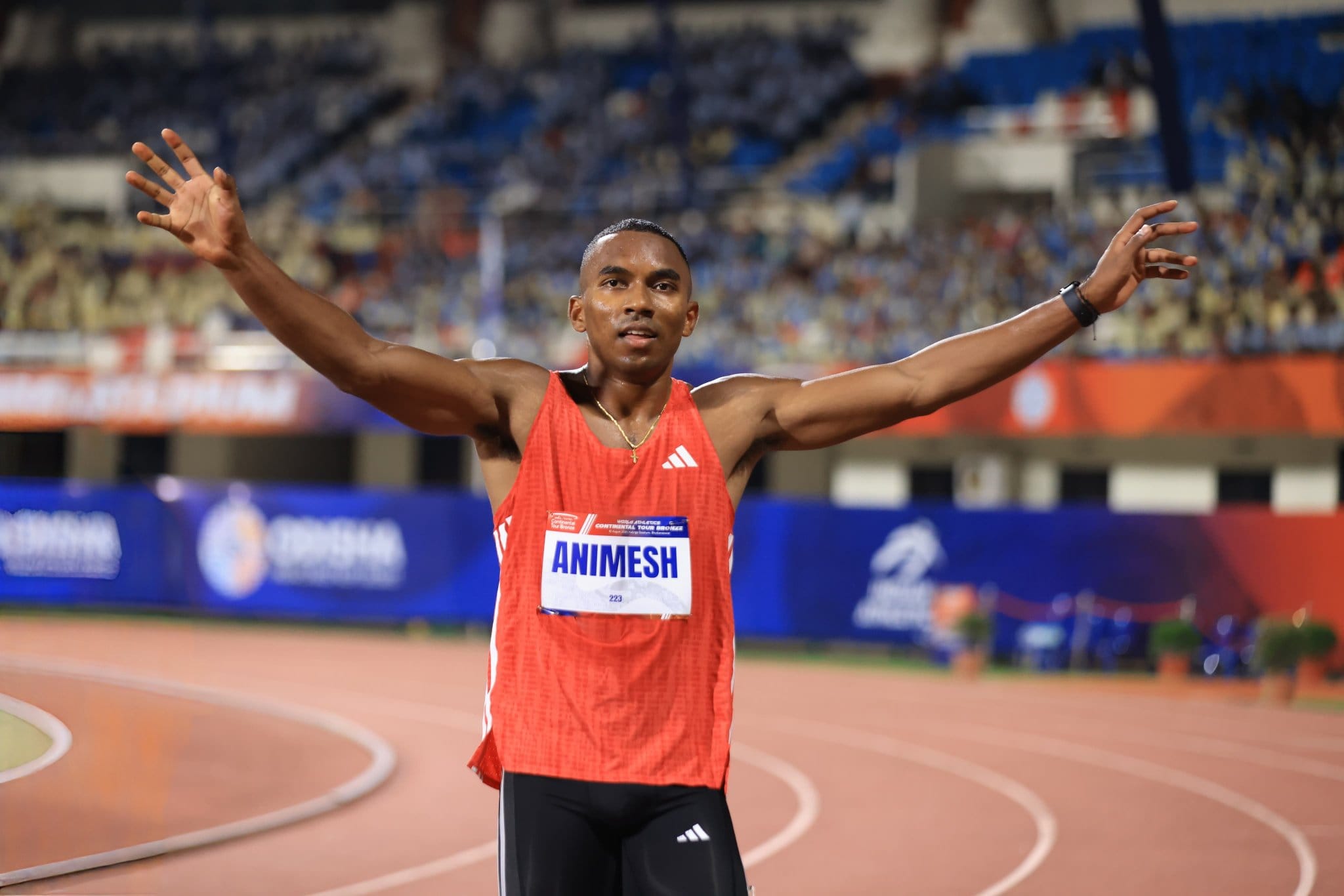Indian athletics has been waiting a long time for a sprint story worth telling. That story finally arrived this year, and it has a clear headline: Animesh Kujur is the fastest man in India.
It happened on a summer evening in Vari, Greece. July 5, 2025. The Dromia International Sprint & Relays Meet isn’t usually a stage where Indians make global noise, but Kujur did. He ran the 100m in 10.18 seconds.
/english-betterindia/media/post_attachments/uploads/2025/07/2150_8_2_2025_17_50_36_1_NGATHLETICS_08022025_06-1751884693.jpeg)
Ten-point-one-eight. The number matters. Because until then, no Indian had dipped under 10.20 seconds. Gurindervir Singh’s old mark of 10.20 was gone, and India suddenly had a sprinter timed inside that bracket.
Source: Times of India
It may not sound like much of a margin 0.02s but in the world of sprinting it is massive. A lean at the tape, a stronger start, the slightest difference in stride turnover, that’s all it takes. And for India, it meant history.
The story didn’t begin in Greece though. Earlier, in April 2025, the Federation Cup in Bhubaneswar saw Kujur clock 20.40 seconds in the 200m. That timing erased Amlan Borgohain’s 20.52s record and, for a while, made Kujur the fastest man in Asia over 200m. The numbers showed up in official season lists an Indian name at the top, rare enough to make people double-check.
Source: Outlook
Then came South Korea, the Asian Athletics Championships in Gumi. Kujur not only held his nerve in a continental final, he went quicker: 20.32 seconds. That run fetched him the bronze medal and a fresh Indian national record. The difference between him and the gold medalist was hardly a stride. India had a sprinter on the podium in Asia, something that doesn’t happen often.

Relay teams often don’t get the same attention, but this year they mattered too. With Gurindervir, Manikanta, and Borgohain alongside him, Kujur helped India’s 4x100m team run 38.69 seconds yet another national record. It showed India isn’t just producing one-off performances, but piecing together squads that can compete at Asian level.
But the biggest headline came away from Asia. Kujur qualified for the World Athletics Championships in Tokyo, the first Indian male sprinter to ever do so. That’s not a small footnote; it’s a marker of progress.
Source: Outlook, NDTV, Times of India
At the Championships, he ran the 200m heats. His time: 20.77 seconds. On paper, that left him ninth in his heat, 42nd overall out of 52 athletes. Not enough for the semifinals. But think of what it meant an Indian sprinter on the same track as finalists from the Olympics and Diamond League. Just reaching that stage was breaking new ground
Source: Khel Now
Let’s stack his year:
- 100m – 10.18s in Greece, new national record.
- 200m – 20.32s in Gumi, another record + Asian bronze.
- Relay 4x100m – 38.69s, national record.
- World Championships – first Indian male sprinter to qualify, 200m debut at Tokyo.
What Animesh’s Rise Means for Indian Athletics
Three records, a medal, and a World Championships appearance all in one season. That’s not normal in Indian athletics.

Global comparisons are tricky. Usain Bolt’s 9.58 (100m) and 19.19 (200m) are still galaxies away. Even in Asia, Japan and China regularly push sub-10 and sub-20. But the context is important. India has never consistently produced sub-10.20 sprinters, let alone World Championships qualifiers. Animesh has changed that conversation.
Another point that sets him apart: he’s done it across venues. Some Indian sprinters have run quick times domestically and then struggled abroad. Kujur’s records came in Bhubaneswar, in South Korea, in Greece. He has carried form across different tracks, conditions, and levels of competition. That’s the mark of someone reliable, not a one-day wonder.

So what next? The dream target is obvious break the 10-second barrier in the 100m and the 20-second wall in the 200m. Nobody from India has done either. Is it possible? Hard to say. The margins at that level are cruel. But what seemed unthinkable five years ago doesn’t look impossible today.
Even without those global numbers, the cultural impact is clear. For the first time in memory, kids at Indian tracks have a sprinter to name, someone whose timing stands up internationally. Not just another long-distance runner or javelin thrower, but a genuine short-distance star.
Follow the latest article on Sportspedia Zone about:
Bookmark Sportspediazone for more sporting updates, and stay tuned!


[…] Paris 2024 alone, Indian athletes set new benchmarks with 29 medals, far surpassing the 19 medals won at Tokyo 2020. This progress is […]